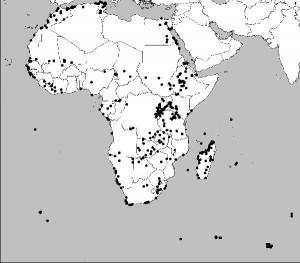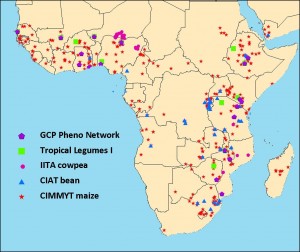There’s a nice, informative piece on the history and achievements of the Missouri Botanical Gardens in the St Louis Post-Dispatch. It celebrates the garden’s 150th anniversary this year, very much focusing on the international research aspects of its work.
Leading those efforts is Peter Raven, the garden’s director since 1971.
“What Dr. Raven has done is establish a world-class research organization that’s dedicated to protecting biodiversity around the globe,” said Roger Beachy, president of the Donald Danforth Plant Science Center. “His vision is global, and the garden’s work reflects that.”
You may remember a little post we did about the place last year on the occasion of its 6 millionth specimen.
Not only are garden scientists routinely discovering plants new to science, they’re also investigating plants to be used in new drugs and those that form the backbone of the world’s food supply.
Unfortunately there was not much more in the article about the plants that form the “backbone of the world’s food supply,” which I take to be a reference to work on crop wild relatives.
One tool the garden has developed that is assisting scientists do just that is the Tropicos database, which contains more than 3.5 million plant records, the world’s largest.
“If you want to preserve an ecosystem, you’d better know what plants you have,” said Rainer Bussmann, director of the William L. Brown Center for Plant Genetic Resources.
The Brown Center is where garden staff conducts its applied research, studying plants used for medicine, supplements, food and clothing. Among the plants garden staff have reviewed is the rosy periwinkle, which produces a drug shown to help children with leukemia.
Surely there was a better example than that old chestnut!
The Post-Dispatch also has a bunch of videos on the garden.

